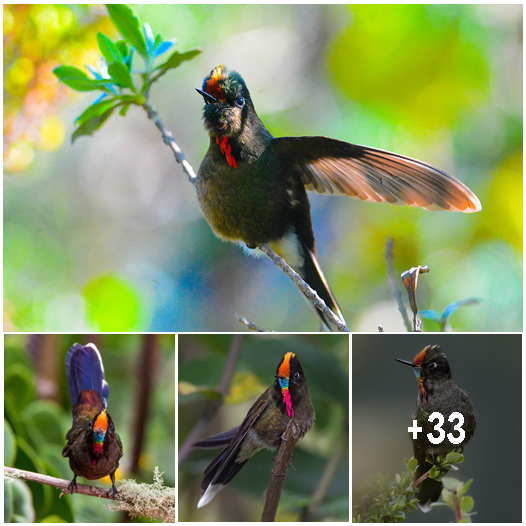Many birds were favored glittering iridescent plumage since birth. This charismatic coat certainly makes a name for these creatures and enables them to be conspicuous whenever they appear. If you get an opportunity to see these birds in nature, make sure that you grasp it.
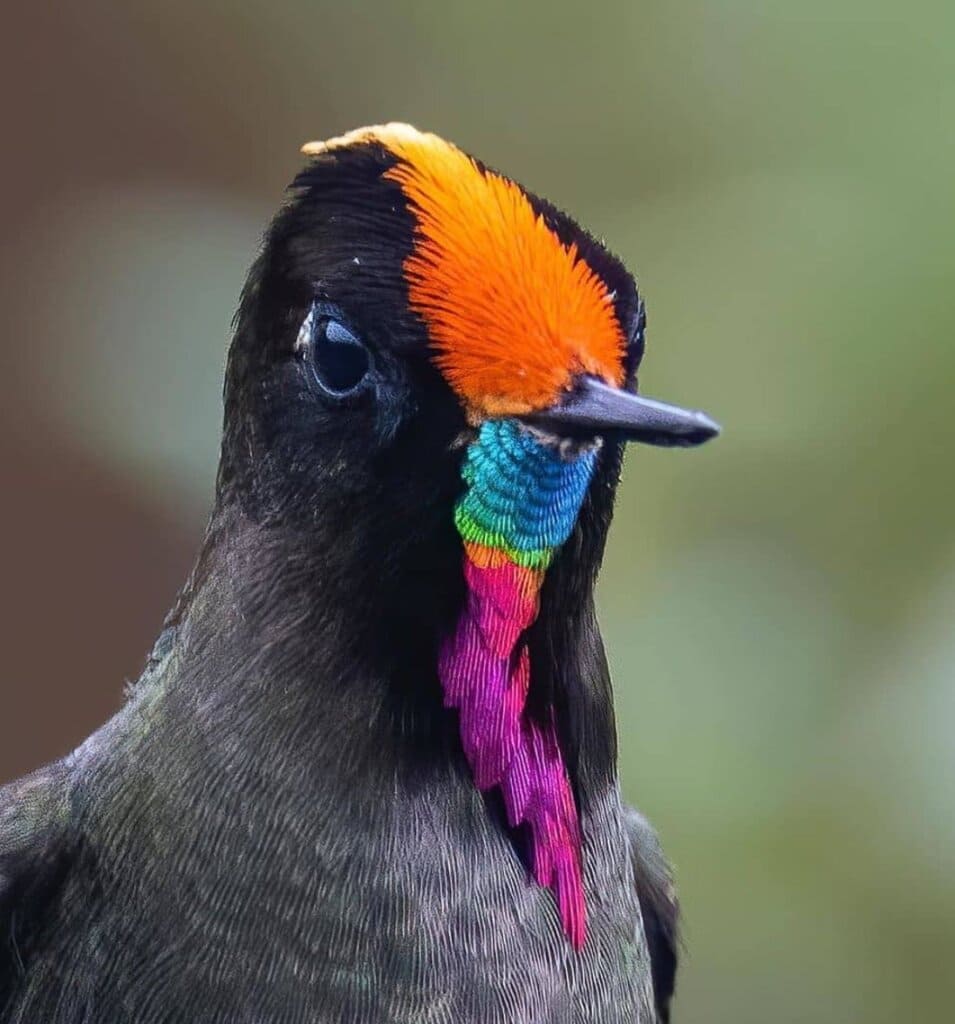
Image Credits: Instagram/birdsonearth
The rainbow-bearded thornbill is among these outstanding birds. As its name may suggest, this bird wears a rainbow of color on its face. Its head is dark green with a long, rufous crest on top and a white dot behind each eye. Take a closer look at its throat, it’s celadon-green turquoise, yellow, red, and pink.
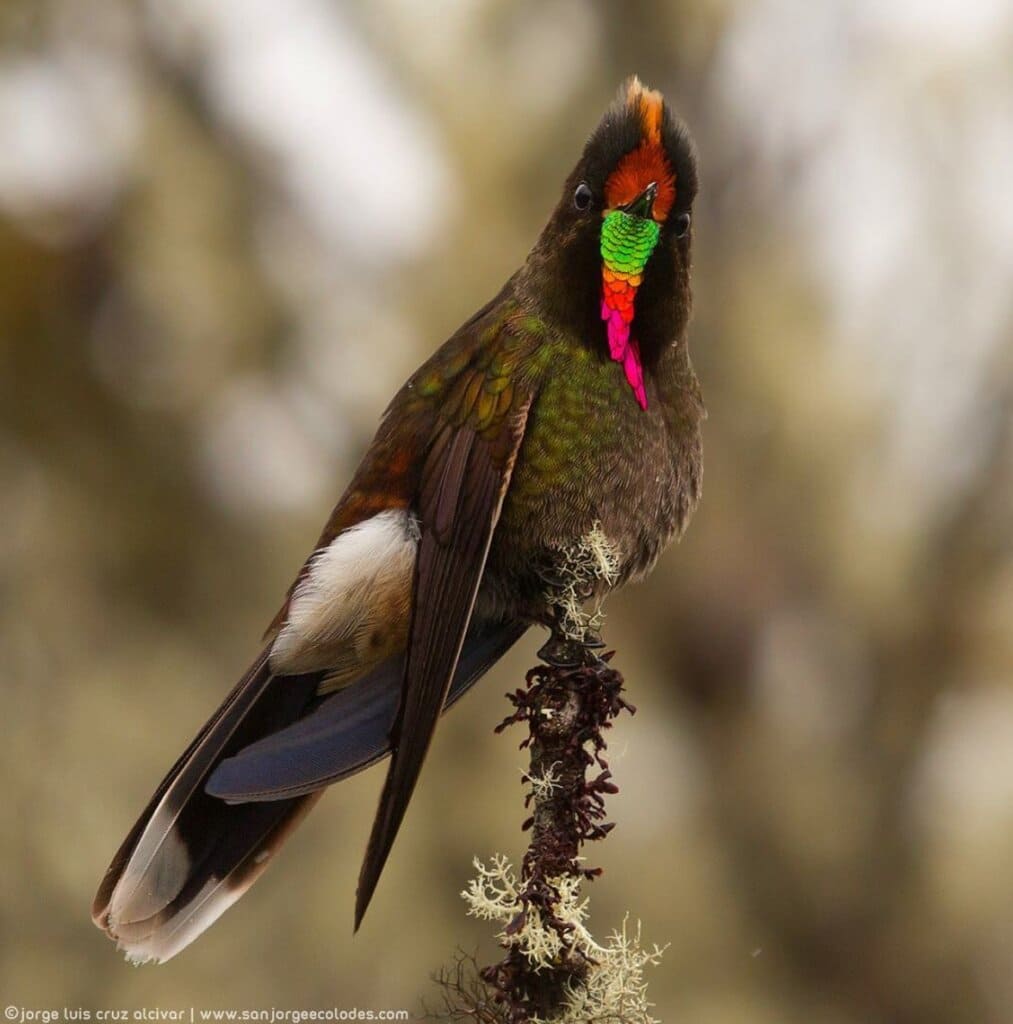
Image Credits: Instagram/hummingbirds_of_ecuador
The long tail of these tiny birds is also eye-catching. It is a dark purple with prominent white tips at the corners.
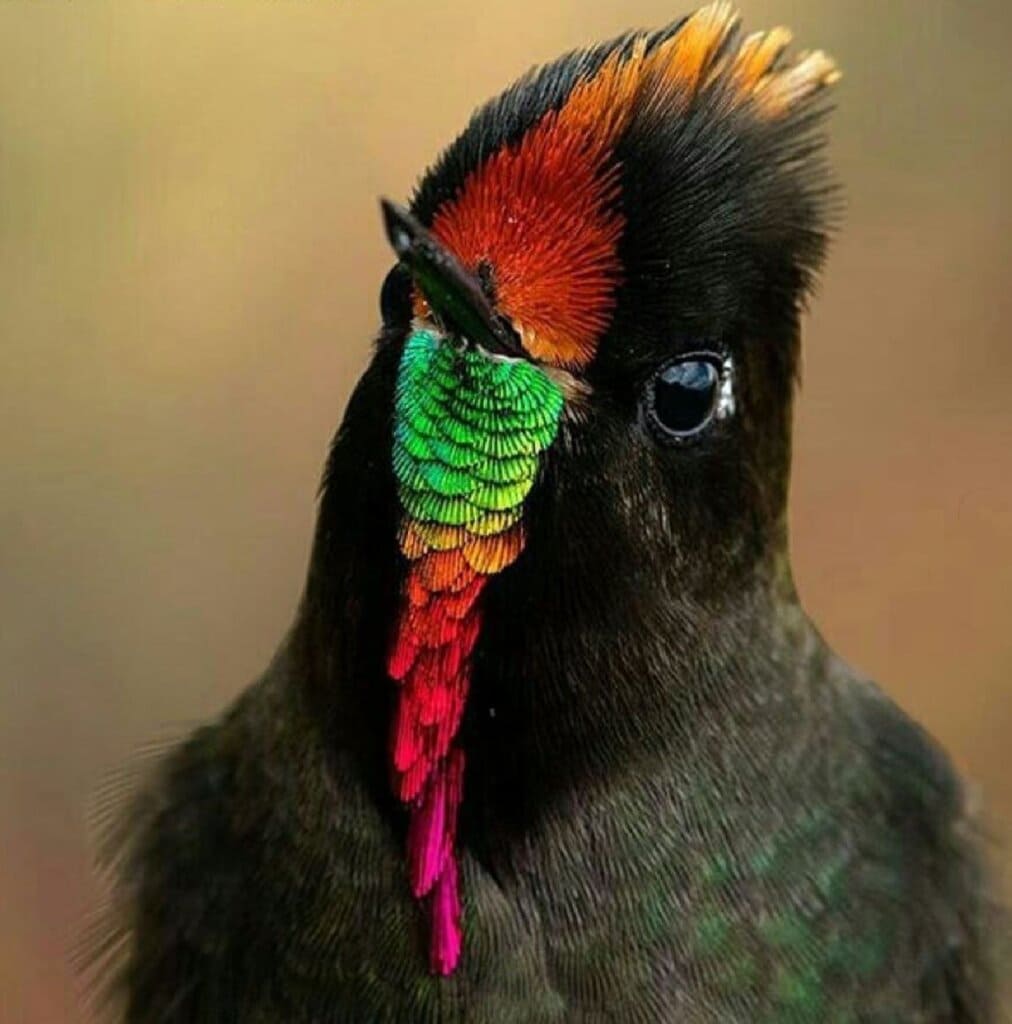
Image Credits: Instagram/shahbaz_birds
Let’s discover the stunning beauty of this bird below.
Female rainbow-bearded thornbill birds look quite similar to males even though they are a bit duller. Their belly and tail are covered with yellowish-ochre color. They also lack the gorgeous beard of the male, like young birds.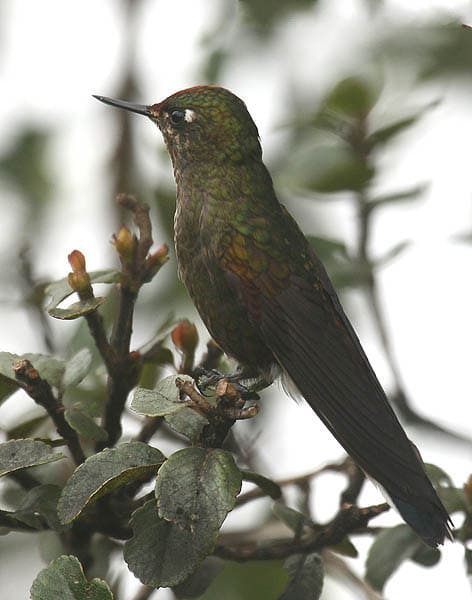
Image Credits: Michael Woodruff / CC BY-SA 2.0
The rainbow-bearded thornbill is a species of hummingbird in the Trochilidae family. They distribute in Ecuador, Colombia, and Peru.
These hummingbirds prefer living in subtropical or tropical high-altitude grassland, elfin forest, open country with bushy patches and small woodlands, and gulleys with thickets of ferns and bromeliads.
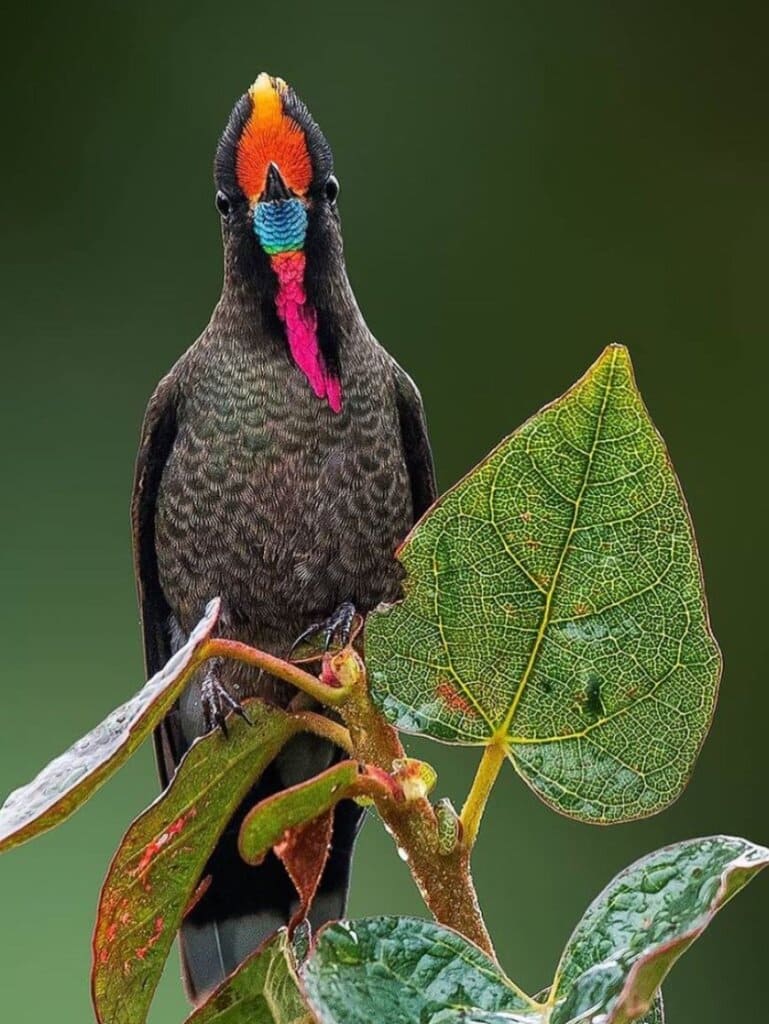
Image Credits: Instagram/faunadaily
During the breeding season, female rainbow-bearded thornbill birds build nests in a bush, shrub, or tree on their own. This cup-shaped nest is made from woven plant fibers, green moss, soft plant fibers, animal hair, and feathers.

Image Credits: Instagram/dozia.boi
The females then lay 3 eggs in their nests, incubate them and feed the hatching for 7-10 days, until fully fledged.
Regarding the diets, these striking hummingbirds dine mainly on nectar from small flowers, low bushes, and shrubs. But they also hunt insects for food sometimes.
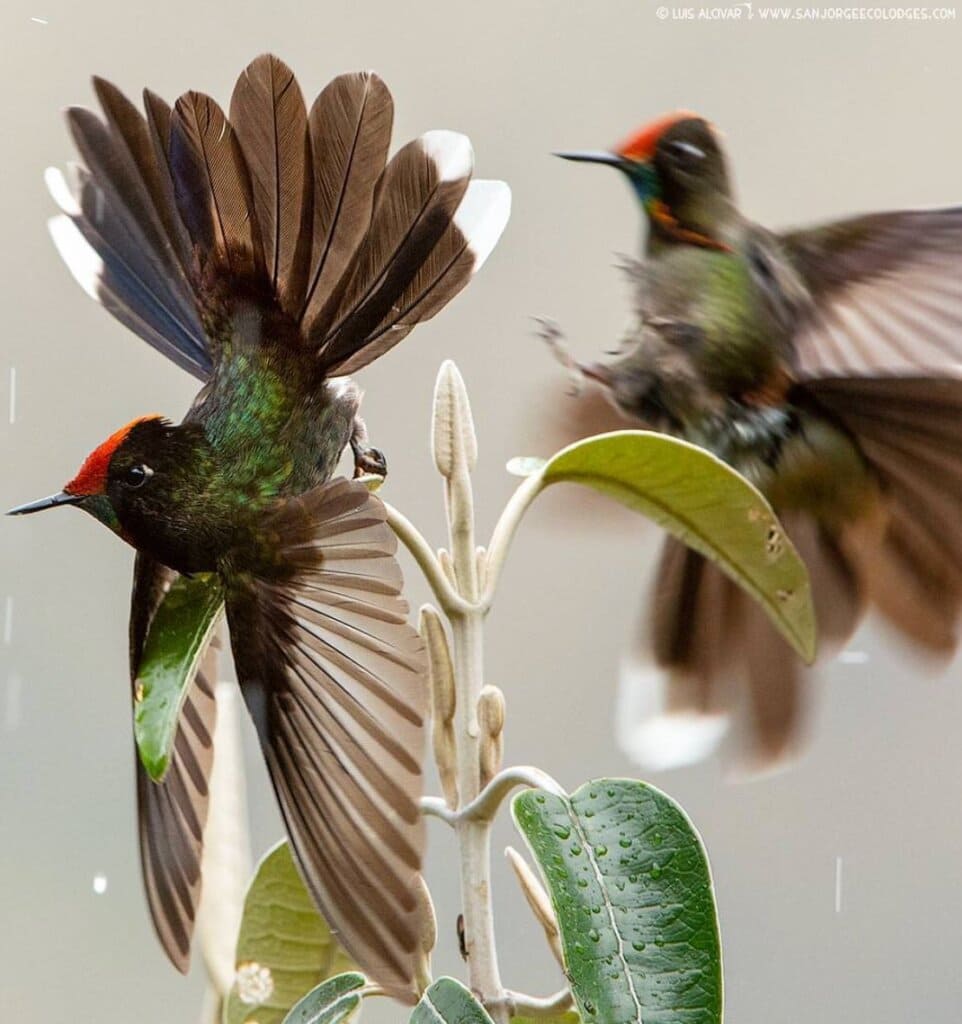
Image Credits: Instagram/magic.birding
If you love these gorgeous little birds, just share the article with your family and friends. Nature is amazing!
